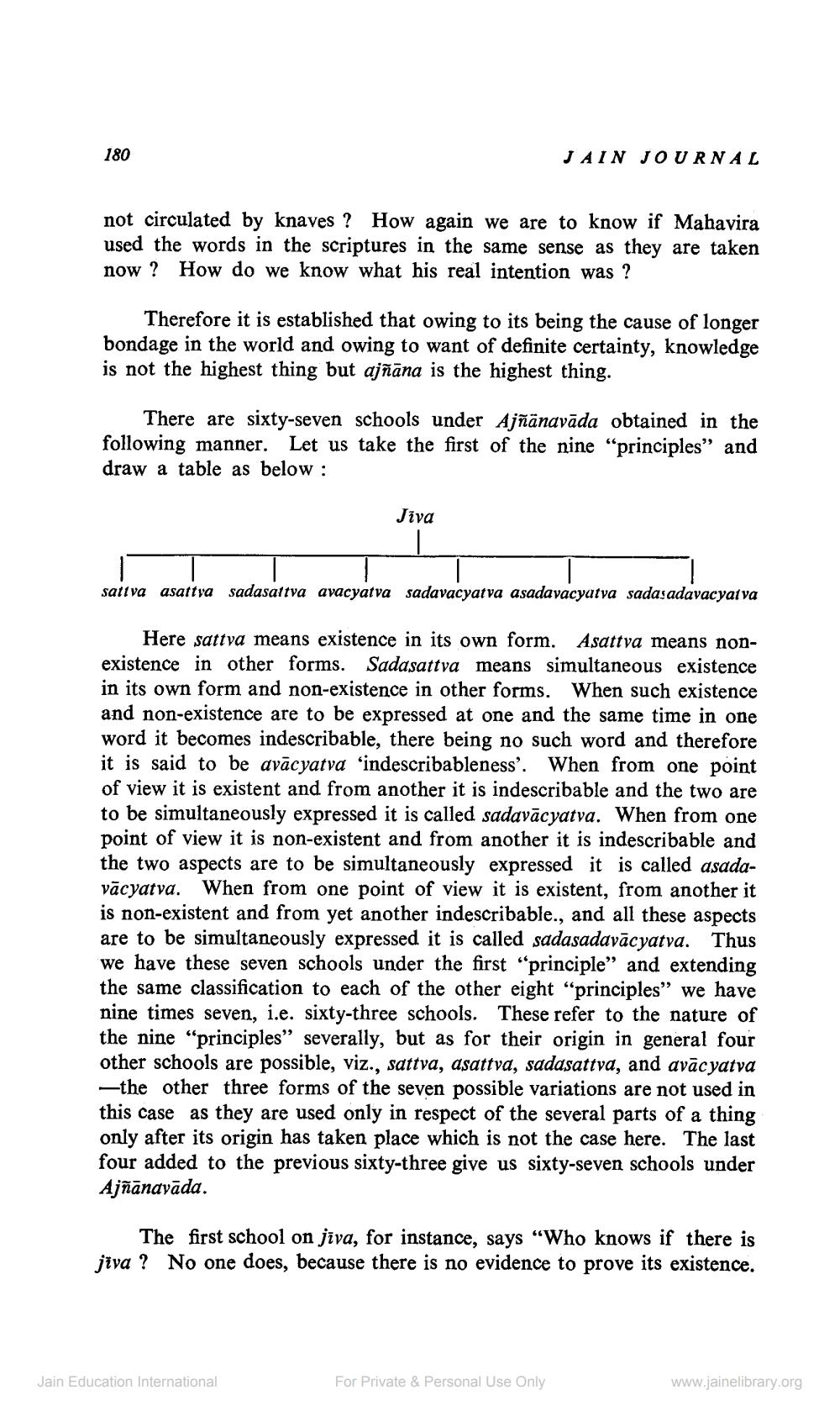________________
180
JAIN JOURNAL
not circulated by knaves ? How again we are to know if Mahavira used the words in the scriptures in the same sense as they are taken now? How do we know what his real intention was ?
Therefore it is established that owing to its being the cause of longer bondage in the world and owing to want of definite certainty, knowledge is not the highest thing but ajñāna is the highest thing.
There are sixty-seven schools under Ajñänavāda obtained in the following manner. Let us take the first of the nine "principles” and draw a table as below:
Jiva
saliva asattva sadasattva avacyatva sadavacyatva asadavacyatva sadasadavacyalva
Here sattva means existence in its own form. Asattva means nonexistence in other forms. Sadasattva means simultaneous existence in its own form and non-existence in other forms. When such existence and non-existence are to be expressed at one and the same time in one word it becomes indescribable, there being no such word and therefore it is said to be avācyatva 'indescribableness'. When from one point of view it is existent and from another it is indescribable and the two are to be simultaneously expressed it is called sadavācyatva. When from one point of view it is non-existent and from another it is indescribable and the two aspects are to be simultaneously expressed it is called asadavācyatva. When from one point of view it is existent, from another it is non-existent and from yet another indescribable., and all these aspects are to be simultaneously expressed it is called sadasadavācyatva. Thus we have these seven schools under the first "principle" and extending the same classification to each of the other eight “principles” we have nine times seven, i.e. sixty-three schools. These refer to the nature of the nine "principles" severally, but as for their origin in general four other schools are possible, viz., sattva, asattva, sadasattva, and avāc yatva -the other three forms of the seven possible variations are not used in this case as they are used only in respect of the several parts of a thing only after its origin has taken place which is not the case here. The last four added to the previous sixty-three give us sixty-seven schools under Ajñānavāda.
The first school on jīva, for instance, says “Who knows if there is jiva ? No one does, because there is no evidence to prove its existence.
Jain Education International
For Private & Personal Use Only
www.jainelibrary.org




